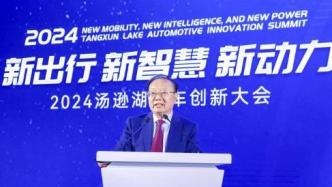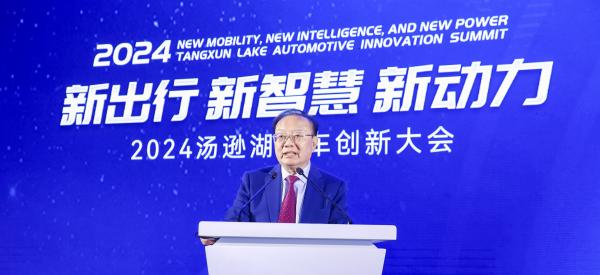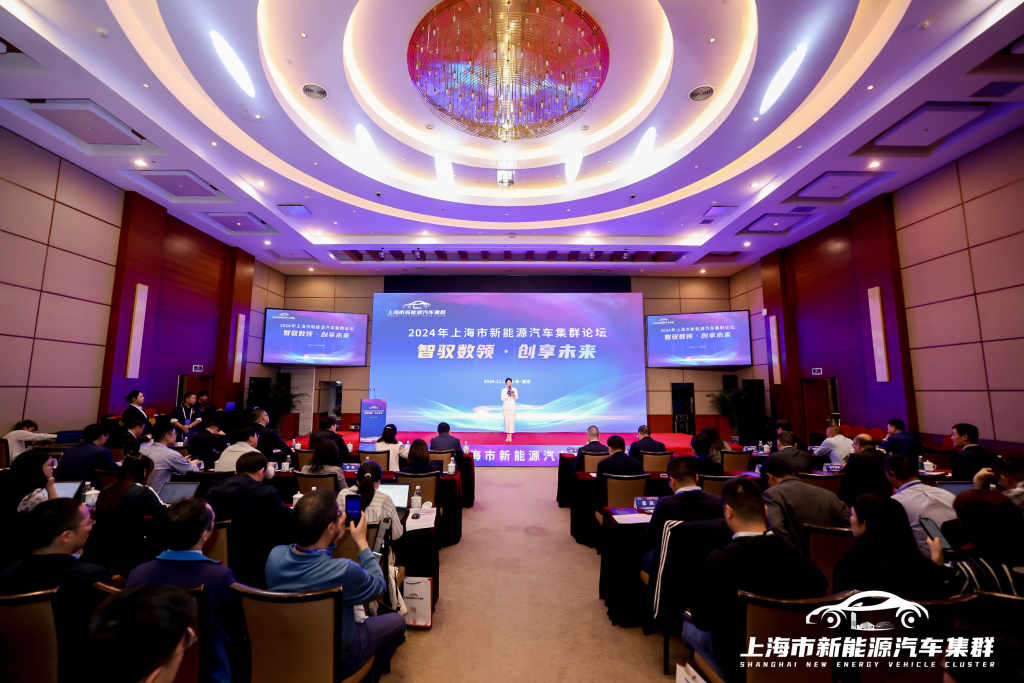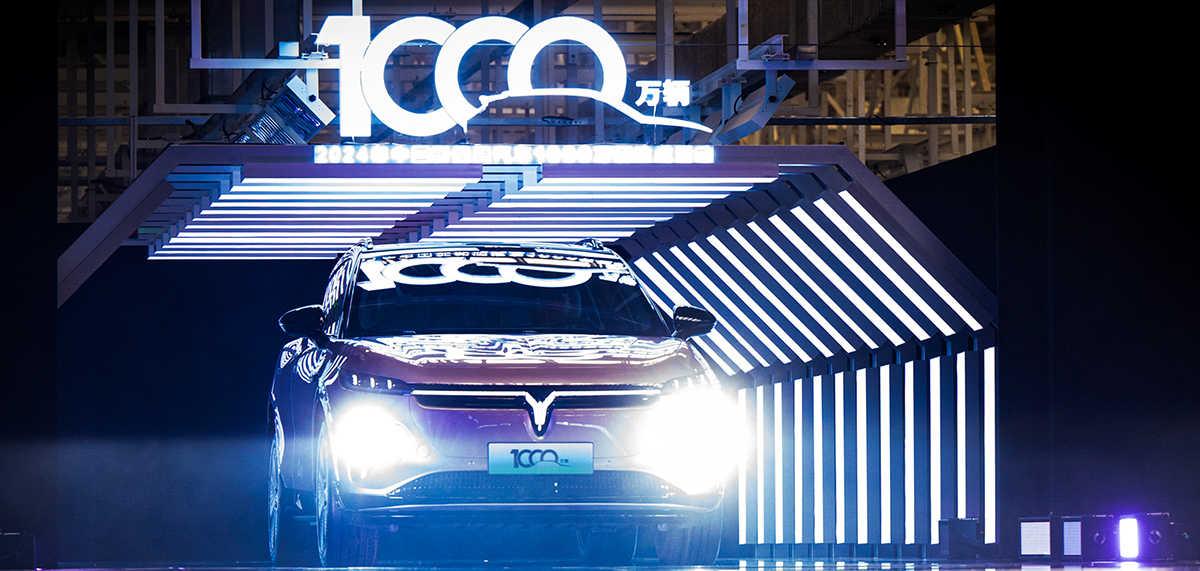
On May 23, Wei Jianguo, former Vice Minister of the Ministry of Commerce and member of the Senior Expert Advisory Committee of the China Center for International Economic Exchanges, said when attending the "2024 Thomson Lake Automotive Innovation Conference" hosted by Phoenix Automotive in Wuhan that China's new energy vehicles are one of the world's The confidence and hope for the recovery of the manufacturing industry will lead to the development of the global manufacturing industry in the next 10 years.

Wei Jianguo, former Vice Minister of the Ministry of Commerce and member of the Senior Expert Advisory Committee of the China Center for International Economic Exchanges
The following is the full text of the speech:
What is the future development trend of global manufacturing? Japan's 2023 edition of the "Manufacturing White Paper" gives the answer, which is that the overall transformation will be achieved through digital transformation and green transformation in the future.
The report analyzed 14 fields, 803 final products, and 281 products in 6 key technology fields in the United States, China, Japan, Europe, and South Korea. Through the analysis, it was concluded that the United States is still in the manufacturing sector. It is the global hegemon, with China in second place and Japan in third place. However, it is clearly stated that China has surpassed the United States in terms of digital transformation, green transformation and global industrial chain and supply chain. This is the first time that Japan has mentioned China's new energy vehicle industry. .
I think this judgment of Japan, although relatively objective, is still conservative. On the contrary, for the global manufacturing industry, I think China's new energy vehicles will be the confidence and hope for the recovery of the global manufacturing industry, and will lead the development of the global manufacturing industry in the next 10 years, and have a great influence on the global future manufacturing owner chain in China. The development of new energy vehicles will trigger the fourth industrial revolution in China, that is, the digital revolution.
Why do you say this? There are three reasons:
First, the size of a country's new energy vehicle market and the level of demand often determine the country's status and voice in the development of the global new energy vehicle industry. Let’s look at China first. First of all, from the perspective of market size, it can be said that no country in the world can match China. Some experts estimate that based on the current size, even if the new energy vehicles of the United States and the European Union are added together, there is no country like China. The market is big. Speaking of demand, it is not an exaggeration to describe it as fierce.
According to statistics, China's new energy vehicles accounted for 40.8% of the global market in 2020, rising to 64% in 2023, an increase of 24 percentage points in three years. This is incredible. Experts estimate that by 2024, that is to say, this year will Reach 70%.
This is only in terms of quantity. In terms of quality, China ranks first in the world in terms of the number of types and projects of various power sources produced. Among them, it involves pure electric, hybrid, hydrogen fuel, etc. Judging from the daily reports from various media around the world, China's new tracks and new types in this field are constantly emerging, which are currently beyond the reach of German and Japanese companies. . According to statistics, among the new energy sources in the world, only China currently leads the list in terms of types.
The second reason is that China is already far ahead in terms of technology and technological research and development of new energy vehicles. International authorities agree that China's technological revolution has achieved remarkable success in two aspects. The first is digital transformation and green transformation, and the second is the combination of market and government. The first two transformations are that China started early, developed rapidly, and achieved good results. It can be said that new energy vehicles lead with one move and lead with every move.
Secondly, from a global perspective, there is no other country in the world that attaches as much importance to new energy vehicles as the Chinese government and integrates the government and the market. What's more, China's digital leadership and huge advantages in the industrial chain and supply chain will provide huge support for the sustainable development of China's new energy vehicles in the next few decades. This is why the United States is very angry about this and is trying its best to suppress it. In fact, whether they slander "China's overcapacity", "government subsidies" or "301" anti-dumping investigations every day, their real purpose is to strangle China's newly emerging new energy industry in the cradle.
The third and most important reason.
At present, the global trend of green development in the future is unstoppable, and China's new energy vehicles are products that adapt to this era and are the goals pursued by the government, market and consumers. The most obvious example is that at the just-concluded United Nations Framework Convention on Climate Change in Dubai, known as COP28, it was clearly stated that "gradual transition away from fossil fuels" was written into the final binding text.
The text points out that by 2030, the capacity of global renewable energy will triple, the speed of energy efficiency will double, the reduction of thermal power will be accelerated, and methane emissions will be significantly reduced. This major project will be implemented in a fair, orderly and equitable manner. Not only that, but also specifically requiring governments of all countries to report the latest implementation status of their governments at the COP28 global conference to be held in Brazil in 2025, and then propose next-step work plans and measures.
This is a major challenge to Chinese enterprises, and the development of China's new energy vehicles is the first step in meeting this challenge. This time it started, it was of great significance. It will not only greatly enhance global confidence in addressing climate change, but also provide tremendous support and encouragement to countries in low-carbon and green development. It will also reaffirm and affirm China's role in leading the world in the low-carbon green economy in the future.
It should be said that China's contribution in this aspect in the past ten years has been tangible and is obvious to all the world.
According to statistics, China's renewable energy investment has ranked first in the world for seven consecutive years. Currently, 50% of the world's wind power equipment, 60% of power batteries, and 80% of photovoltaic equipment are produced in China. It is precisely because of production in China that China's strong The industrial chain and complete manufacturing categories have reduced global wind energy production line costs by 80% and solar energy costs by 90%.
Next, China will have more key technological breakthroughs in nuclear energy, hydrogen energy, and hybrid energy, and production costs will continue to decline. China's new energy industry will make a huge contribution to a new round of response to global changes and renewable energy transformation.
China's new energy vehicles are just beginning to show their prominence.
As Mr. Fatih Birol, Director of the International Energy Agency, recently told the media, "China is the global champion of clean energy." Faced with this outstanding performance, the next step in the development of new energy vehicles is crucial. We cannot be complacent, we must always maintain a sense of urgency and crisis, and see that as long as we relax, others will catch up and surpass you.
To this end, I suggest that China should make three moves in the next development of new energy vehicles.
First, we must continue to increase scientific research, expand export markets, and upgrade products.
Second, in the face of various fallacies such as the "China overcapacity theory" from the United States and Europe, we must strictly refute and argue with reason, and let the world realize that the ultimate goal of the United States is to suppress China's new energy vehicles.
Third, China’s “chain master” position in the global industrial chain supply chain of new energy vehicles must be consolidated and consolidated, and the global industrial chain and supply chain of new energy vehicles must be expanded through trade in intermediate goods. We need to expand and extend both ends of the chain to all countries, especially the countries along the “Belt and Road”, so that all countries around the world, including the United States, Europe, Japan, and South Korea, can participate in this huge-scale, equal, mutually beneficial, and win-win economic cooperation.


